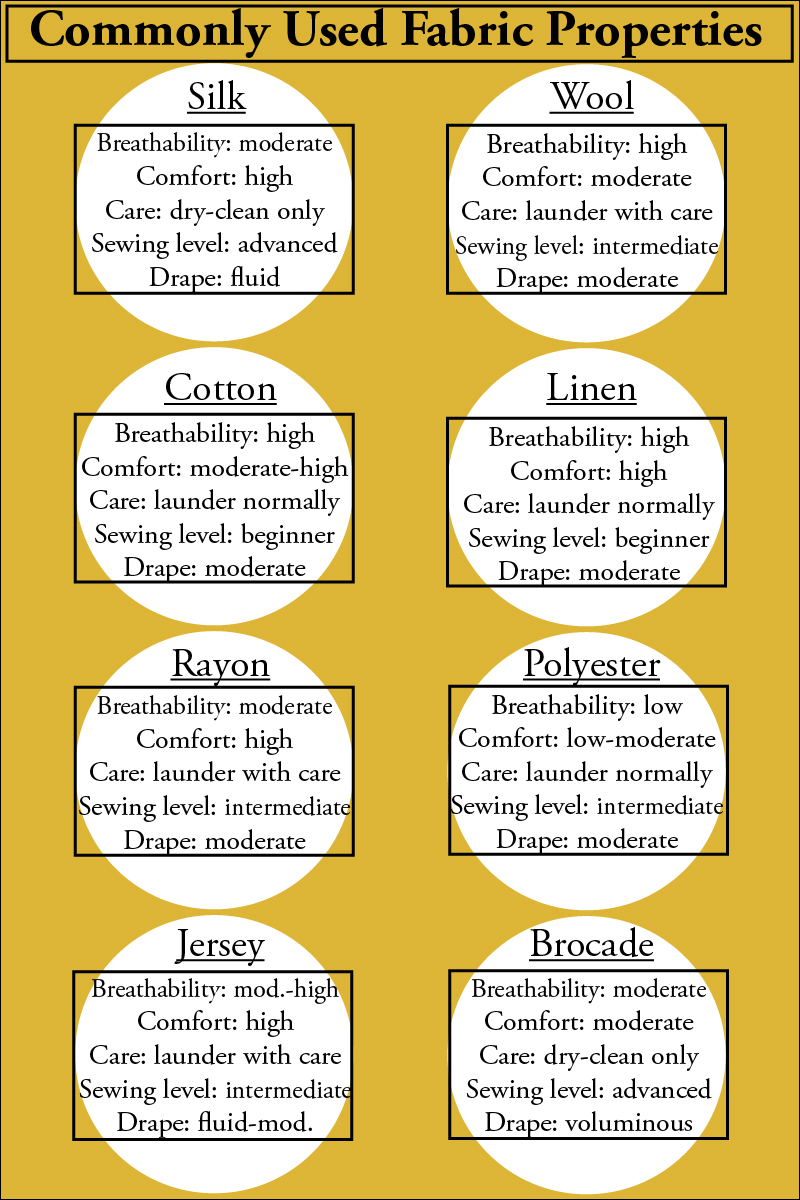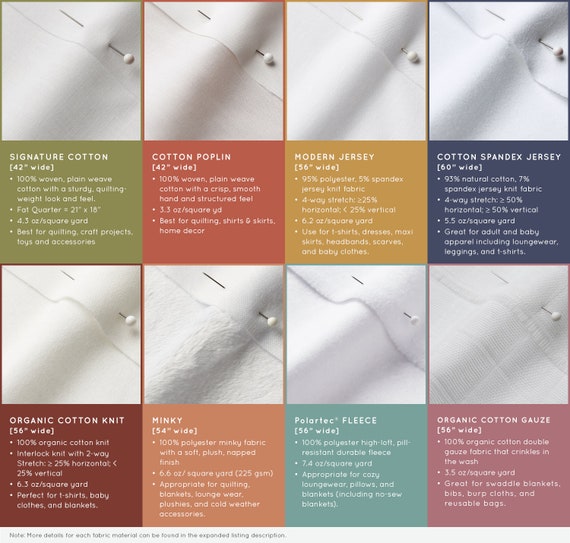The Buzz on All 4 Way Stretch Fabrics
All 4 Way Stretch Fabrics Fundamentals Explained
Table of ContentsFacts About All 4 Way Stretch Fabrics UncoveredAll 4 Way Stretch Fabrics Fundamentals ExplainedSome Known Incorrect Statements About All 4 Way Stretch Fabrics All 4 Way Stretch Fabrics - QuestionsThe smart Trick of All 4 Way Stretch Fabrics That Nobody is DiscussingExcitement About All 4 Way Stretch FabricsThe 10-Second Trick For All 4 Way Stretch Fabrics
As I additionally want UV defense from my garments when I go out, I would certainly pick a densely woven cotton material. One even more factor to consider when buying the fabric is the way it will after washing.A risk-free bet would certainly be to acquire at the very least 10% additional material. If you can get preshrunk material, this is the finest.

If you are matching the shade, like choosing the lining for the main material or selecting material to include as trim, this is specifically important. The material display rooms will usually have a light well where you can see the material in sunshine (or a window with excellent light from outdoors).
Unknown Facts About All 4 Way Stretch Fabrics

Most textiles have to do with 44 wide. When you most likely to purchase textile, quote how a lot you want initially and afterwards most likely to the shop. Take a look at this article to understand the solution to this often listened to concern "How much material do I require". With a fat quarter, you will obtain an 18 large by 22 long.
Some excellent bargains can be had this way. In dressmaking, we get textile by the yard/meter.
The 6-Second Trick For All 4 Way Stretch Fabrics
In a quarter of a lawn, you obtain a 9 by 44 strip of material, which has to do with 22 centimeters in length. It is always much better to get broader fabric. According to the width of materials, they may be called single-width and double-width. Single size is usually up to 49 inches in width and double width as much as 60.
You can discover more about yard to meter conversion here. Have a look at this post on reviewing a tape action Select materials that are not too hard or inflexible, or you would not fit in them. Linen, Jeans, flannel, For cooler environments, select woollen (100% along with woollen blends) woollen tweeds, woollen crepe; it essentially depends upon what pants you are speaking about Tailored trousers, Unstructured Pant, Combined, Denim.
Corduroy fits to use fabric to select for pants. All cotton materials benefit children. You can choose a cotton satin stretch or a cotton twill or cotton satin or grass. Knit materials are additionally great for youngsters you can go for woollen knits. Interlock knits are dressmaking knits that stretch throughout the grain.
Little Known Facts About All 4 Way Stretch Fabrics.
Cotton lawn cloth in lovely prints is excellent. Silk jacket is a wonderful fabric for stitching skirts, as is Ponte Roma weaved textile.
Also, drapey rayons, soft wool, lycra blends, and stretch velvets are all suitable for stitching skirts. Woollen (Wool crepe has an excellent drape and provides sufficient structure for jackets; wool tweeds are terrific also), Linen & Flannel. Velvet (Check out the slouchy velvet sports jacket tutorial, by the means). Light-weight knits benefit free-flowing jackets such as this waterfall jacket pattern Raw silk, satin, taffeta, velvet, Shoelace, silk chiffon, and Fabric are all excellent for making dresses.
You can get medium-weight materials with some spandex/elastane included for a fitting bodycon-type outfit. For drapey gowns, you can choose light-weight fabrics. Crepe, challis, and charmeuse are all drapey textiles suited for this design.
Lightweight cotton textile, Cambric, Chintz, Twill, Faille, Seersucker, Poplin, lightweight woven broadcloth, batiste, bed linen, eyelet are good for making t shirts and blouses. I like chiffon blouses. Silky satin fabric is great for making ventilated tops. Have a look at the post on the 7 finest fabrics for making t shirts. Making shawls and headscarfs require different considerations for the material check out this message on the textiles for making scarves When purchasing formed material (the majority of the formed fabric includes a size of 45 or 54 inches), there will be pattern repeat in these materials, and this need to be considered when reducing fabric in addition to acquiring them i.e., if you intend to match the patterns at the seams.
The Best Guide To All 4 Way Stretch Fabrics
The themes will be dispersed in an organized fashion on the textile. You may discover often If the print is not positioned on the fabric appropriately, it can not be matched or lined up when constructed without distorting the textile and the hang of the garment.


The textile weight is dependent on lots of factors like the weave, fiber type, and so on and is typically signified by GSM. GSM can differ from 60 -700; 700 being the GSM of really top quality woolen material.
One point you have to keep in mind is that higher material weight does not signify higher fabric high quality. You can not choose high fabric weight fabric denim for a light-weight drifting stole.
In a nutshell, the most important standards to look for in the textile you purchase are as follows (https://www.behance.net/rayherrera). The number of threads per inch of material (yarns-per-inch).
All 4 Way Stretch Fabrics for Dummies
In high-quality textile, this balance (either in numbers or in size) will certainly constantly be kept. Procedures made use of on textile to boost look and efficiency.
A two-ply yarn transcends to a single-ply yarn.
If you are preparing yourself to start a new sewing task, picking a textile will certainly be the most essential step once you choose what you want to make. After you've gone to all the difficulty and expense of buying the stitching equipment you like, a pattern you enjoy, and a material you enjoy, you want the finished item to be a success? One method to accomplish that is to begin by making certain your fabric is truly appropriate for the task.
About All 4 Way Stretch Fabrics
As an example, if you're making a patchwork, you'll automatically wish to use quilter's weight cotton for finest outcomes. What if you want i thought about this to make a thing of apparel? Exactly how do you understand which fabric will offer you the ideal result? Selecting a fabric merely because you like the print or layout on it isn't necessarily the most effective technique.
In order to prevent doing a whole project for practically nothing, we have actually put together some suggestions to help you decide which textile is appropriate for your task. Let's say you already have a task in mind; exactly how do you discover the best fabric for it?
Assume of the attributes you desire the finished product to have. Do you desire a solid color or a print? If you are making a non-wearable product such as a pillow cover or pot holder, use a tough textile such as canvas.
There is a lot info out there regarding fabrics, their features, and their uses, it can reach be frustrating! Do not attempt to take it in all at when; simply start with the job at hand. Learn all you can regarding the textile you utilize for this set project.